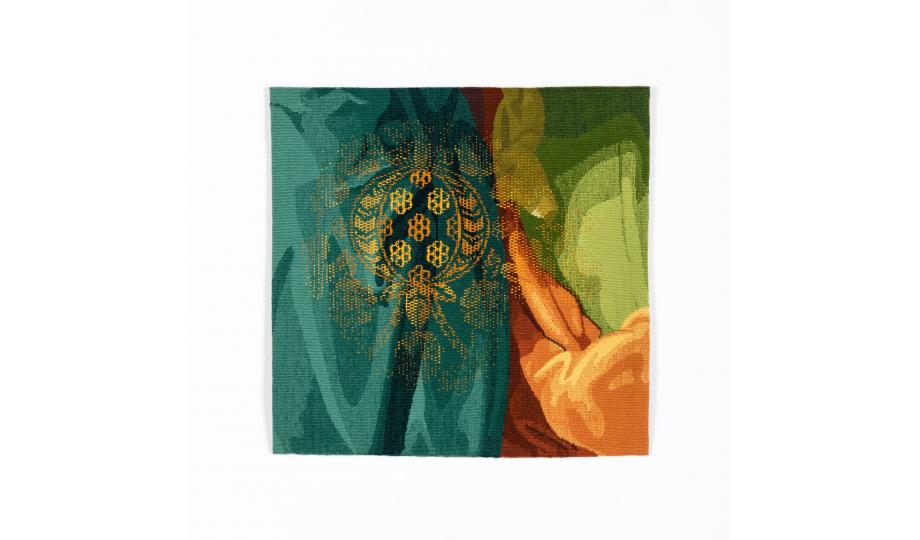Murray Gibson
1999
This tapestry is inspired by Jacopo Pontormo's Visitazione, 1528. In part, Gibson has quoted the area of the painting where the bodies of the cousins, Elizabeth and Mary come together; to indicate that moment in which the infant John the Baptist, in the womb of Elizabeth, quickens in the presence of the Christ child in the womb of the Virgin. However, this is also the moment of recognition between the two women as they acknowledge not only the fates that await their sons, but also the moment they acknowledge each other as women beyond their role of mother. The drapery of the women's gowns, billowing over their wombs, becomes the abstracted background to the tapestry. Seeming to overlay the drapery is the abstracted image of a pomegranate which emerges from the folded cloth; it is one small section of an overall repeat pattern created in the manner of a William Morris textile/wallpaper pattern block. The pomegranate was chosen for its myriad associations with fertility and, within a Christian tradition, the womb of the Virgin, the blood of Christ, and the widespread influence of the Catholic Church. This is one from an ongoing series of tapestries that examines the role of women, textiles, power and the fate of men.

